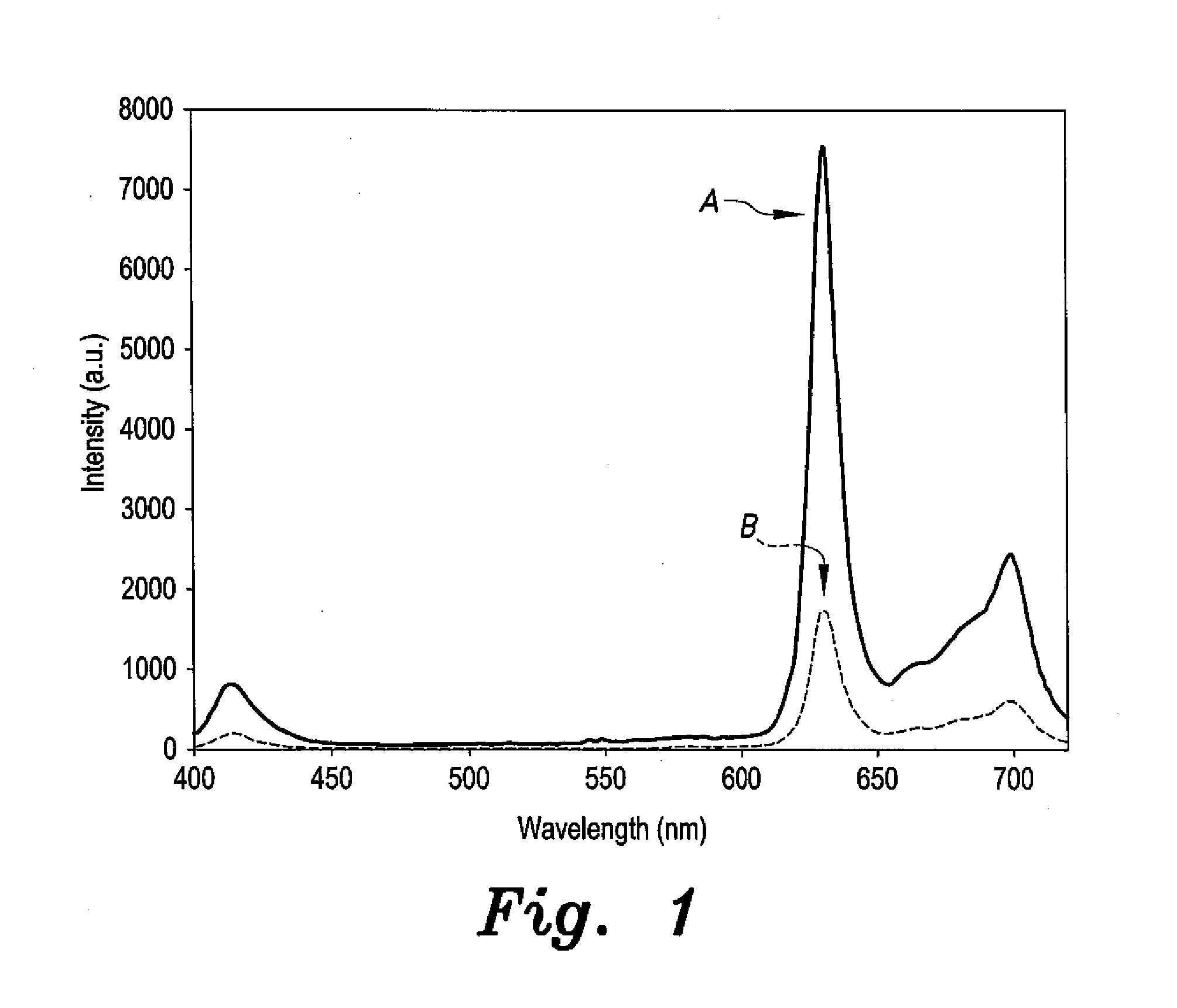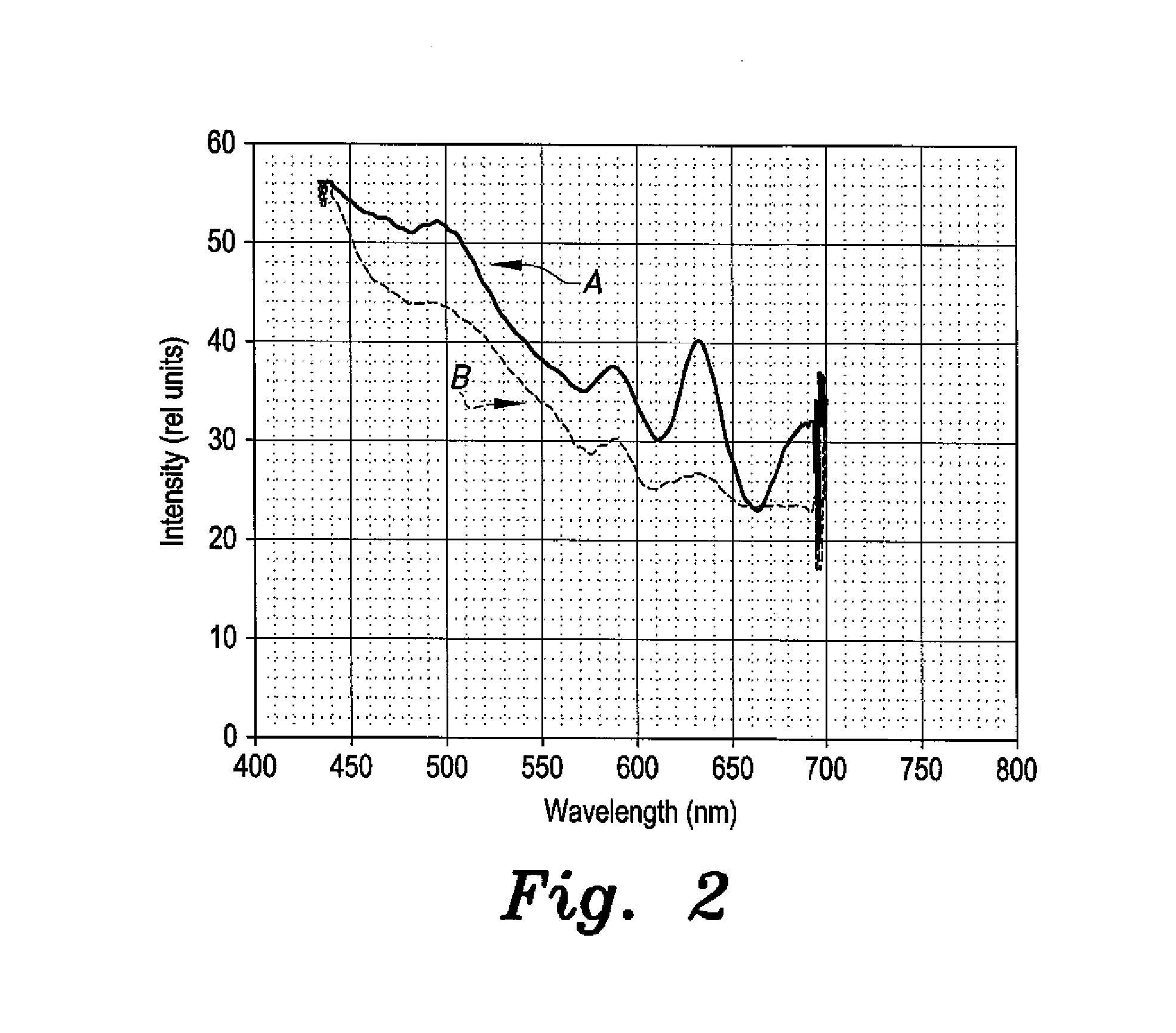Method of detecting bladder cancer by optical analysis of bodily fluids
a technology of optical analysis and bladder cancer, applied in the direction of fluorescence/phosphorescence, material analysis, instruments, etc., can solve the problems of insufficient pathological classification, insufficient so-called “cold cup” biopsy during an ordinary cystoscopy, and insufficient visual detection of cancerous lesions
- Summary
- Abstract
- Description
- Claims
- Application Information
AI Technical Summary
Benefits of technology
Problems solved by technology
Method used
Image
Examples
Embodiment Construction
[0011]A method of detecting bladder cancer by optical analysis of bodily fluids utilizes optical techniques to determine a concentration of porphyrin in a patient's bodily fluid sample. The patient is administered 5-aminolevulinic acid (also referred to as 8-aminolevulinic acid), which is the first compound in the porphyrin synthesis pathway (i.e., the pathway that leads to heme in mammals). The 5-aminolevulinic acid is preferably administered orally at a dosage of approximately 5 mg of 5-aminolevulinic acid per kilogram of the patient's body weight. The patient can drink water upon taking the 5-aminolevulinic acid. The patient can wait approximately eight hours before urinating.
[0012]Approximately eight hours after oral administration of the 5-aminolevulinic acid, a bodily fluid sample is collected from the patient, and this bodily fluid sample is optically analyzed to measure a concentration of porphyrin therein. Preferably, multiple bodily fluid samples are taken at two hour inte...
PUM
 Login to View More
Login to View More Abstract
Description
Claims
Application Information
 Login to View More
Login to View More - R&D
- Intellectual Property
- Life Sciences
- Materials
- Tech Scout
- Unparalleled Data Quality
- Higher Quality Content
- 60% Fewer Hallucinations
Browse by: Latest US Patents, China's latest patents, Technical Efficacy Thesaurus, Application Domain, Technology Topic, Popular Technical Reports.
© 2025 PatSnap. All rights reserved.Legal|Privacy policy|Modern Slavery Act Transparency Statement|Sitemap|About US| Contact US: help@patsnap.com


